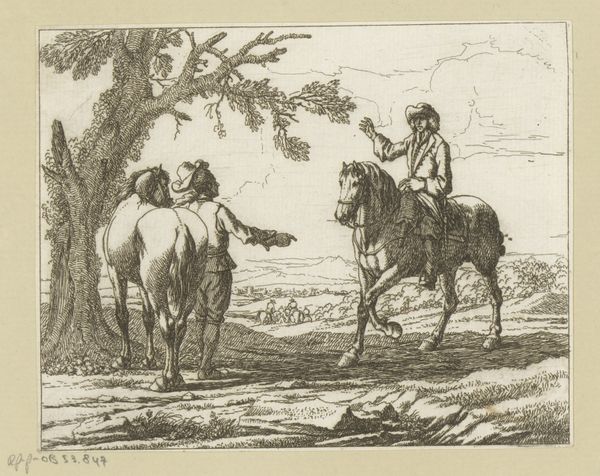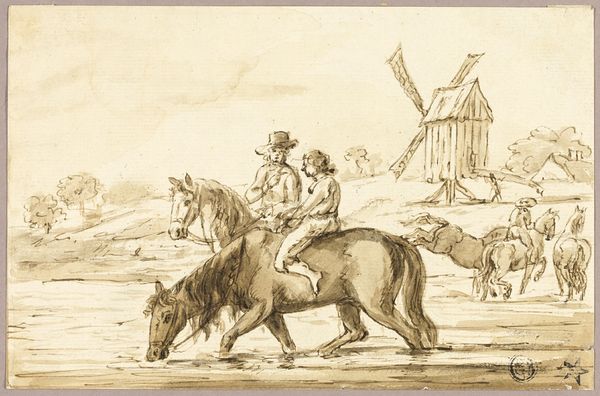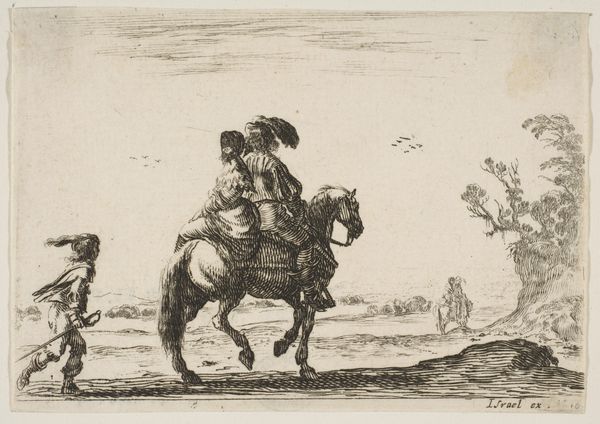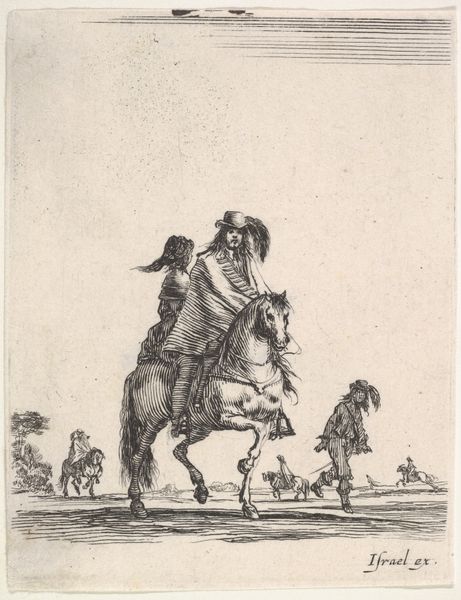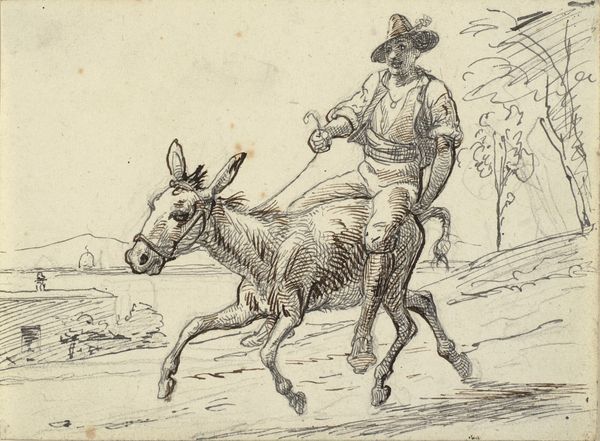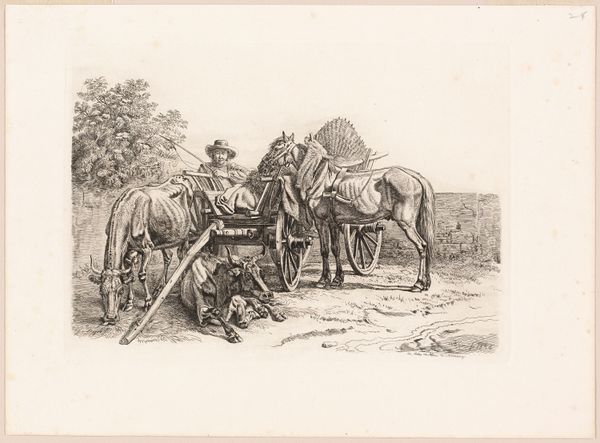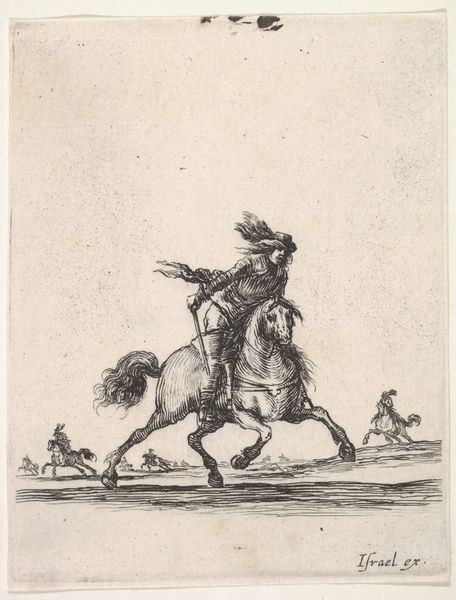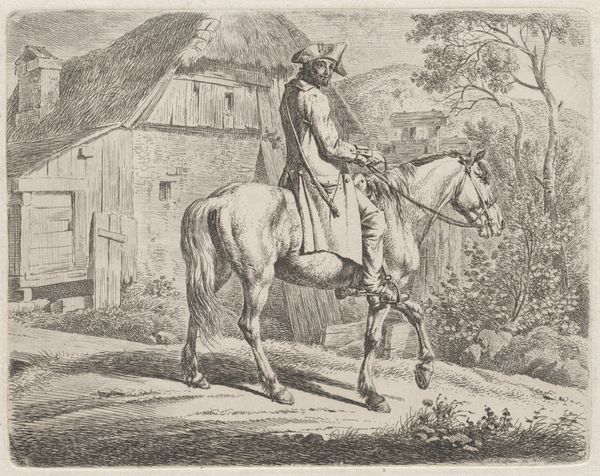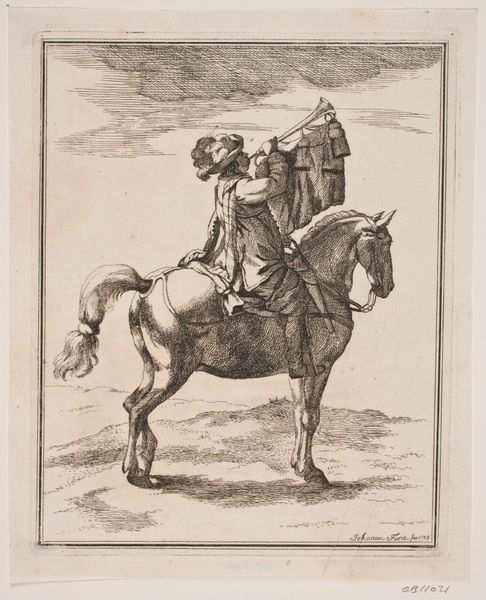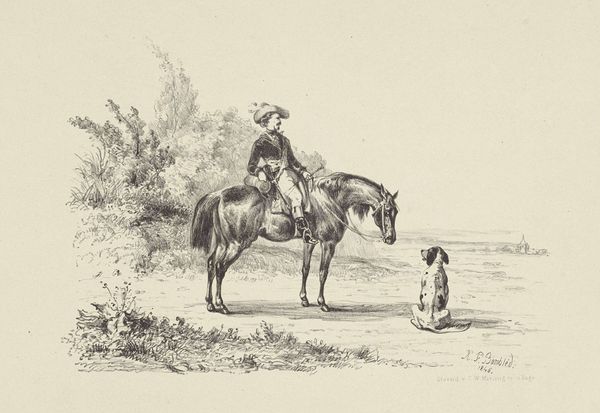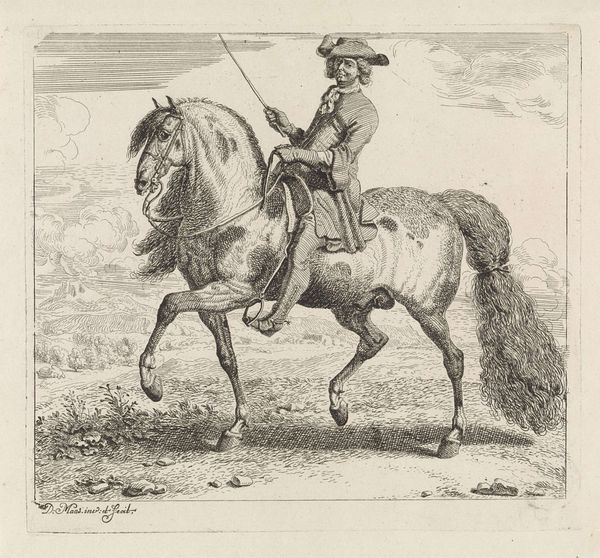
En munk ridende på et æsel fulgt af en italienerdreng 1845
0:00
0:00
drawing, print, pen
#
drawing
# print
#
landscape
#
pen
#
genre-painting
Dimensions: 192 mm (height) x 212 mm (width) (bladmaal)
Curator: Ah, yes. This delightful drawing by Wilhelm Marstrand, created around 1845, is titled "En munk ridende på et æsel fulgt af en italienerdreng," which translates to "A monk riding a donkey followed by an Italian boy." It's currently housed here at the SMK. I wonder what strikes you first about it? Editor: Immediately, the boy's energetic pace juxtaposed with the monk’s languid repose on that sturdy, hard-working donkey. The materials – pen, the printmaking process—it all suggests a ready availability for a burgeoning middle class to acquire little narrative vignettes like this. What was Marstrand saying about labor, travel, and status here? Curator: That's precisely it! There’s a touch of satire, wouldn’t you agree? Marstrand often imbued his works with a certain playful irony. Look at the monk's portly figure and self-satisfied expression. One can't help but sense a gentle critique of religious authority and privilege. But perhaps also, an acknowledgment of the universal need for companionship on life's journey? Editor: True. I’m drawn to the process, actually: how the layering of ink creates depth. Those hills sloping into water imply perspective but there’s nothing illusionistic here. It is a designed view, an item of consumption; landscape plus humans equals picturesque tourism of the day. One can easily see this reproduced and sold. But also, the donkey represents a life of work and labor – he almost seems to sigh in carrying the monk. Curator: Precisely, the everyday reality intrudes, offering a layered understanding of class distinctions. To me, there’s a wistful quality. Consider the boy, practically dancing as he leads the donkey. Is it joy, is it youthful vitality or simply because it is his chore and livelihood. There’s a touch of melancholy there as he journeys with a tired donkey on an never-ending landscape.. Editor: An exchange between man, beast and boy within specific networks. We tend to divorce an image from its conditions. Was the print made to accompany a larger narrative? I’m imagining an early form of visual narrative, meant to be understood widely and cheaply. Curator: Exactly! And looking at it now, understanding its social context, it makes it all the richer, doesn't it? The Danish Golden Age was such a complicated and fruitful moment for art. It shows here. Editor: Absolutely, considering its materials, print reproduction, gives us more layers to consider in terms of artistic production and networks of labor in the mid-19th century.
Comments
No comments
Be the first to comment and join the conversation on the ultimate creative platform.
